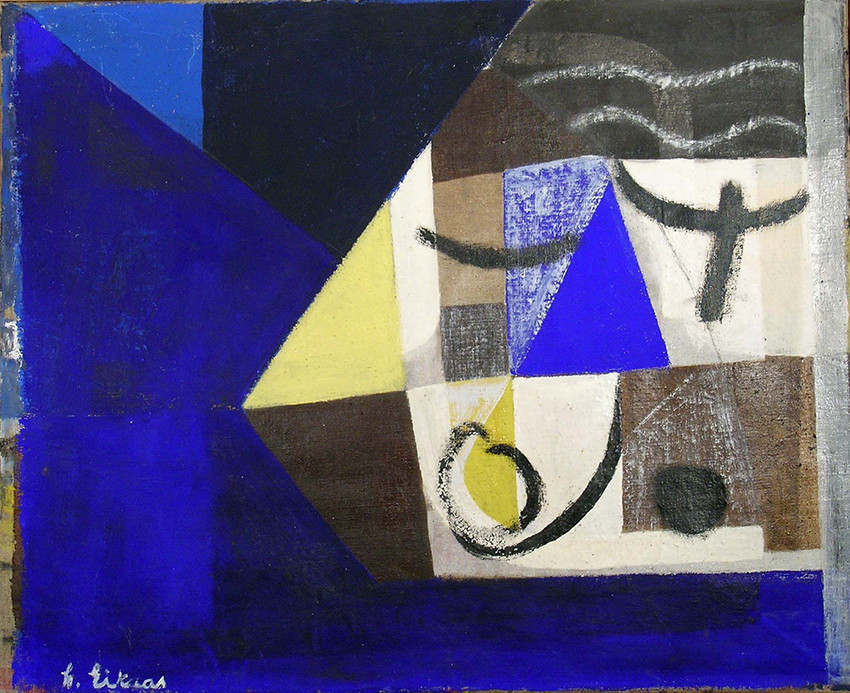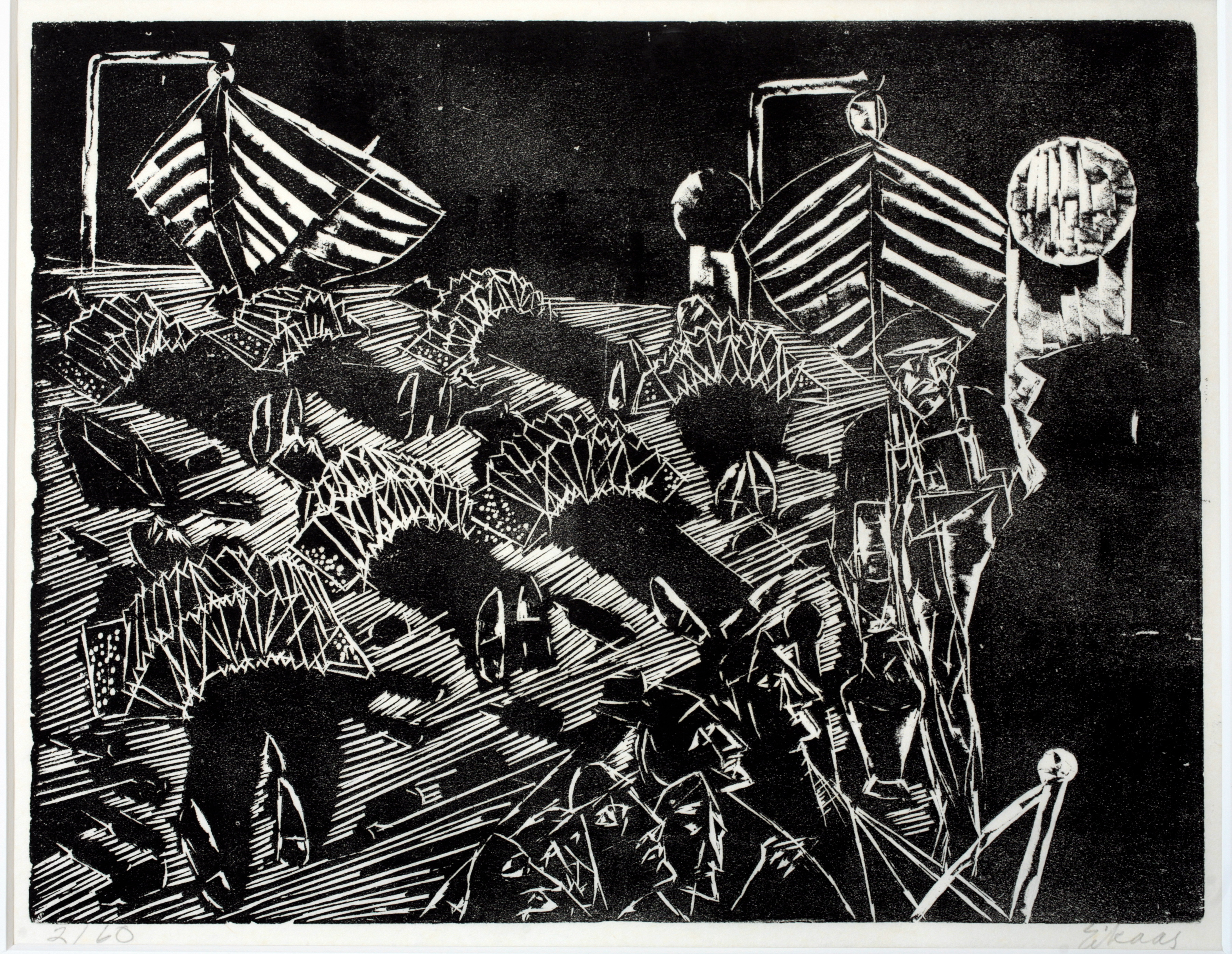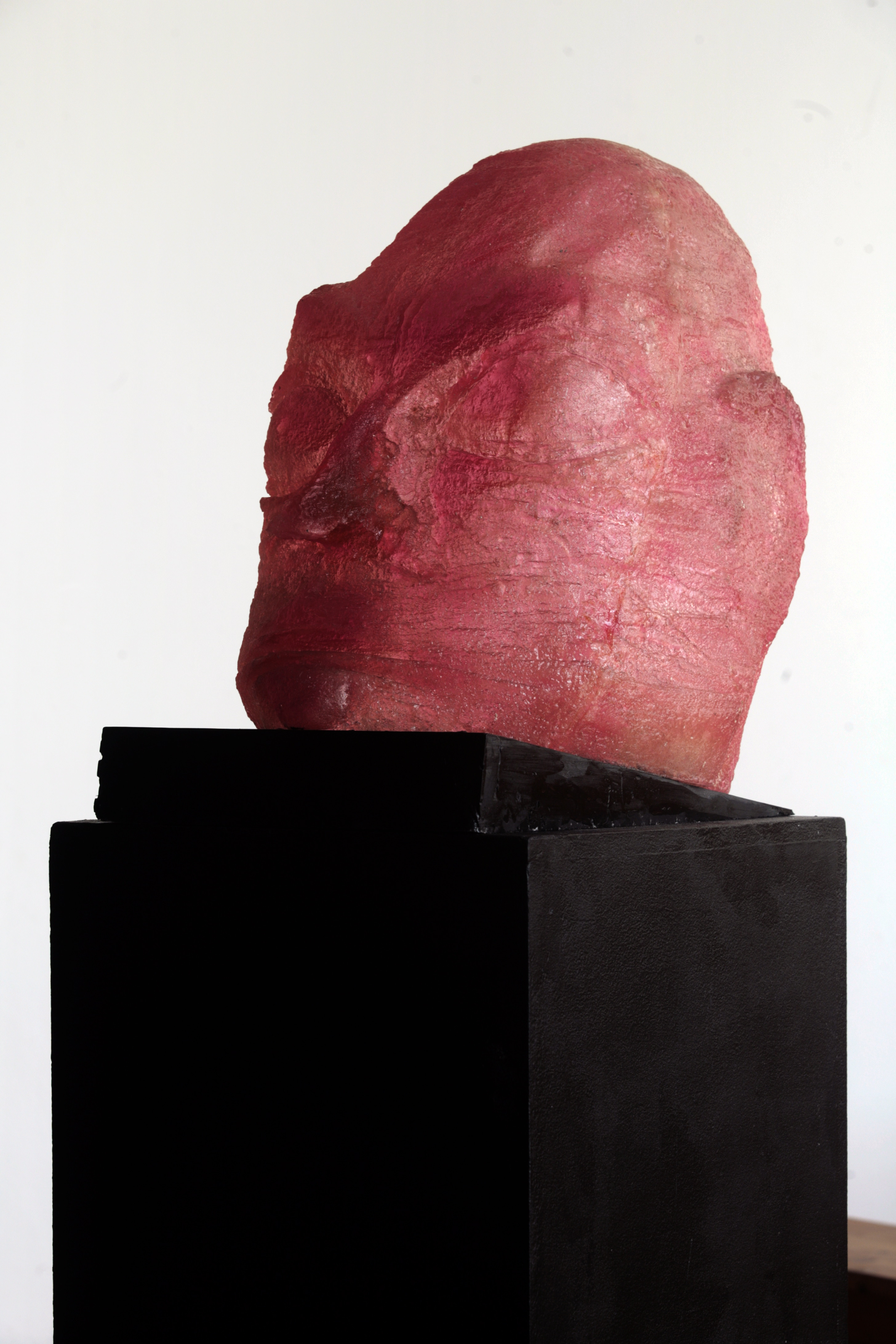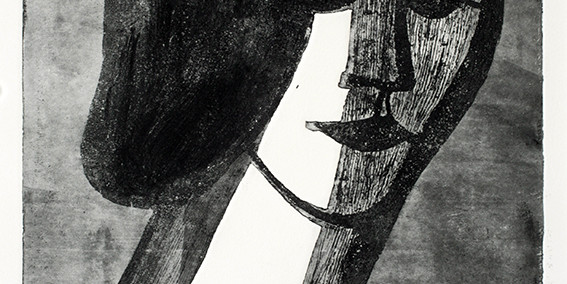Ludvig Eikaas (1920-2010) from Jølster was one of the most prominent visual artists of the Norwegian post-war era. As a young man, he moved to Oslo to study at the National College of Art and Design, then at the National Art Academy, and finally the Royal Danish Academy of Fine Arts in Copenhagen. He debuted at the 1946 Autumn Exhibition and was eventually shown at numerous exhibitions in Norway and abroad. He became a professor at the National Academy of Art in Oslo in 1970, and also served as their rector from 1981-83. Eikaas is represented at around ten Norwegian art museums, as well as the National Gallery of Art in Copenhagen, the Brooklyn Museum of Art in New York, Grand Palais in Paris and the Uffizi Gallery in Florence. He was married to textile artist Synnøve Anker Aurdal (1908- 2000). In 2000, Eikaas was knighted (Knight 1st Class) in the Order of St. Olav, in recognition of his art and dissemination skills.
Eikaas was a graphic artist, painter, sculptor and concept artist. He was known as an exploratory and spontaneous artist who never settled on a particular technique or form of expression. His impressive diversity has afforded him a prominent position in Norwegian art history. In 1994 he got his own gallery in Jølster, and as of today the Eikaas collection contains more than 850 artworks. This includes graphics, paintings, sculptures, woodblocks, collages, readymades and more.
60 years of creativity
The 1940s

During his studies in Oslo, Eikaas worked with simple, and sometimes expressionistic, woodcuts – using both colour and monochrome – with motifs from life in Jølster. From the late 40s until about 1954, he worked with non-figurative paintings and etchings, inspired by Miró, among others. Thus he became one of the pioneers of Norwegian modernism, along with artists like Gunnar S. Gundersen, Odd Tandberg, Tor Hoff, Inger Sitter, Jakob Weidemann, Gudrun Kongelf, Knut Rumohr and Gunnvor Advocaat. Eikaas returned to figurative motifs relatively quickly, though in a slightly simplified form. From the mid-40s onwards, he also painted colourful abstracted portraits of famous individuals, using few and rapid brush strokes.
The 1950s

For Eikaas, this decade involved using a number of different techniques and expressions. For a while, he painted non-figurative images, but he eventually became fascinated by landscapes, interiors and still-lifes. The Eikaas collection mainly has black-and-white woodcuts, some colour lithographs and watercolour paintings from this period. They are simplified figurative works, and the motifs include family, landscapes, animals, music, cityscapes and interiors.
The 1960s

In the early 60s, Eikaas was still focusing on woodcuts, but this was eventually replaced by etching as the dominant technique. Urban life entered the thematic mix, and the mood became lighter and more humorous. He began using textual fragments as a visual form, presenting them just like he would any other visual piece. In the latter half of the 60s, he started working with sculpturing and material art, often using unfamiliar materials such as plastic, polyester, aluminium, steel and papier-mâché. Some earlier graphic or painted portraits took on a sculptural form. In retrospect, we can see that Eikaas was an early exponent of conceptual methods such as the use of found material, text-based works and events. When he painted, he sought to provide a direct sensory impression of the motif by using vibrant colours, large coloured areas and sometimes dripping paint.
The 1970s

In the early 70s, Eikaas experimented with large formats, objects and readymades. He explored and challenged the concept of art and the role of the artist using humour, text fragments and self-staging. He also worked with additional new materials, such as plexiglass. In his graphic work, he mainly stuck to etching and screen prints. The influence of Rolf Nesch became apparent in the use of mixed high and low pressure printing, causing a relief effect in the paper. From time to time we see the use of vibrant colours. His less common political artworks originate from this period.
The 1980s

In the 80s, Eikaas produced a number of black-and-white portraits of famous people, depicted with split faces – one side tinted green and the other red. The techniques were varied, including lithography, linocut, screen prints and printing onto car bonnets. The musician portrait is prominent, and we can still see elements of text-based works and events, such as for the opening of the Fjærland Tunnel in 1986. Eikaas also delivers sculptures to public spaces, using a simplified style, like Hest i Vind (“Horse in Wind”) outside the Førde post office.
The 1990s

Eikaas worked a lot with illustrations in the 90s. He illustrated Ibsen’s plays for the Norwegian Book Club and also created an expressive portrait of him. The series was widely exhibited, including in Oslo, Paris, Reykjavik, Torshavn and Berlin. We can see that Eikaas still worked with texts, portraits and self-staging, in both two and three dimensions. He used techniques such as small-format lithography, woodcuts, sculptures and reshaping found objects. The self-portrait and the bubble tie are created using graphic “line”-sculpting of metal covered in hard plastic. New variants of older motifs were also produced, and in one of the Eikaas collection’s latest works, called Weidemann, he once again returned to the woodcut.
Topmost photo: Portrait of Ludvig Eikaas in his studio, photographer and date unknown.
Ingrid Norum, senior advisor/ konservator NMF, SFKM

